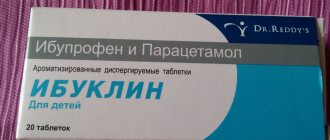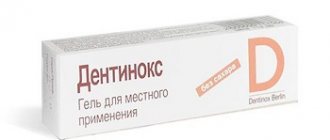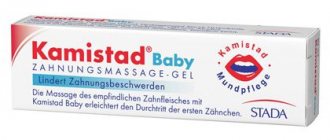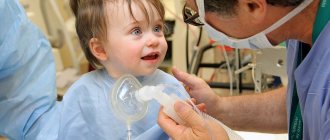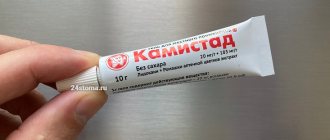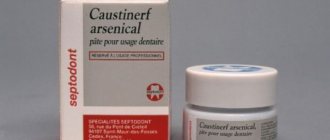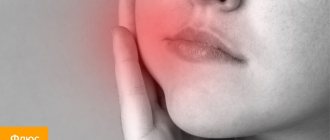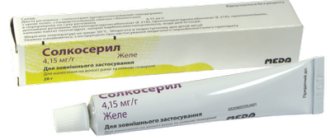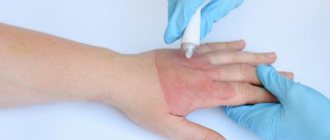Suprastin is perhaps the most famous anti-allergy drug.
A classic antihistamine with a pronounced antiallergic effect. This is a representative of the first generation of the group of antihistamines whose action is rapid, but not long-term. This is precisely what determines its relevance to this day as an emergency aid for lightning-fast allergic reactions and allergic shock. And even with the presence of a huge number of modern representatives of allergy medicine on pharmacy shelves, Suprastin continues to be present in our medicine cabinets to this day.
Composition of the drug.
Chloropyramine hydrochloride.
Excipients: lactose monohydrate, potato starch, sodium carboxymethyl starch, talc, gelatin and stearic acid.
How it works.
Chloropyramine - prevents the development and facilitates the course of allergic reactions, blocks certain histamine receptors - this is a local effect.
As a result, manifestations of allergic reactions - lacrimation, profuse rhinitis, swelling, cough, various rashes simply do not make themselves felt. But the same receptors are also in the brain, and they are responsible for the hypnotic effect. Therefore, taking suprastin is accompanied by weakness, drowsiness, fatigue and absent-mindedness.
When taken orally, the effect appears within 15-30 minutes, the maximum effect develops within 1 hour and lasts approximately 3-6 hours.
Will it help?
Of course, before taking painkillers for a toothache, you should assess the degree of pain and think about the potential consequences of taking medications. In fact, according to statistics, very few people think about these aspects as soon as they experience pain in the oral cavity.
The most important fact is that relieving toothache with tablets will only be a temporary solution. This approach will help alleviate the general condition, but only for a certain time.
It should also be noted that tooth pain is often accompanied by concomitant symptoms, which manifest themselves in inflammation of the gums, cheek area, increased body temperature and a feeling of general malaise. Many of the tablets help relieve secondary manifestations, but have no effect on the cause.
This is why in most cases a visit to the dentist will still be required. After all, the painkiller will simply reduce the level of pain, but not for long. Moreover, in many situations the ongoing disease will only gain momentum and the pain will increase. Therefore, there is no point in enduring without visiting a doctor for a long period with persistent toothache.
Methods of application.
The tablets are taken orally during meals, without chewing and with a sufficient amount of water.
Adults are prescribed 1 tablet 3-4 times a day (75-100 mg per day).
Children aged 3 to 6 years: 1/2 tablet (12.5 mg) 2 times a day; daily dose – 25 mg.
At the age of 6 to 14 years: 1/2 tablet (12.5 mg) 2-3 times a day; daily dose – 25-37.5 mg.
At the age of 14 to 18 years: 1 tablet (25 mg) 3-4 times a day; daily dose – 75-100 mg.
The dose in children can be gradually increased unless the patient experiences side effects, but the maximum dose should never exceed 2 mg/kg body weight.
The duration of treatment depends on the nature, symptoms of the disease, the degree of their manifestation, the duration and course of the disease.
Features of headaches in cervical osteochondrosis.
Headaches (cephalgia) with cervical osteochondrosis are usually of moderate intensity. Patients characterize the pain as dull, pulling, boring, pressing (feeling of squeezing of the head). Cephalgia with osteochondrosis is usually paroxysmal in nature (from several hours to several days).
Most often, the pain is one-sided, localized in the cervical-occipital region and spreads to the frontal and temporal regions.
Headaches with cervical osteochondrosis are often accompanied by:
- photophobia (intolerance to bright light);
- phonophobia (increased sensitivity to sounds, noise);
- feeling of stuffiness in the ear;
- complaints of blurred vision.
Stiffness in the cervical spine and muscle tension are often noted. Pain and stiffness depend on the position of the neck, and intensify with tension in the muscles of the affected side, or with prolonged stay in an uncomfortable position.
Headaches with cervical osteochondrosis are often combined with pain in the shoulder and arm.
Special recommendations.
Elderly patients, as well as those with impaired liver and/or kidney function, cardiovascular system, angle-closure glaucoma, urinary retention, prostatic hyperplasia, should take the drug with caution.
In newborns whose mothers took antihistamines in the last months of pregnancy, there have been cases of neonatal retrolental fibroplasia. Accordingly, the use of Suprastin® during pregnancy is contraindicated.
The use of Suprastin® is contraindicated during breastfeeding. If it is necessary to use the drug during lactation, breastfeeding should be stopped.
The drug, especially in the initial period of treatment, may cause drowsiness, fatigue and dizziness. Therefore, in the initial period, the duration of which is determined individually, driving vehicles or performing work associated with an increased risk of accidents is prohibited. After this, the degree of restriction on driving and operating machinery will be determined individually for each patient.
Let's go through the list
This material is not an advertisement for any products, so we will list the most suitable solutions in tablets for toothache in alphabetical order:
- Analgin.
- Ibuklin.
- Ketanov.
- Ketorol.
- Moment.
- Nise.
- Nimesil.
- Nurofen (ibuprofen and drugs identical to this group).
- Sanaprox.
- Tempalgin.
Ketanov is considered one of the most suitable options when asking what you can drink for toothache. It has a sufficient speed of impact, that is, fast, and at the same time effective. In some cases, such tablets help relieve even severe pain. But you should remember about the frequency of administration and dosages.
Nurofen not only helps relieve pain, but also has an anti-inflammatory and antipyretic effect on the entire body. You should be aware that some of the modifications of these toothache tablets contain a potent substance in the form of codeine. We are talking about variations of Nurofen Plus and Nurofen Plus N. It will also enhance the analgesic effect. The classic version can be used to relieve toothache in both adults and children.
A simple option with classic toothache tablets in the form of Analgin is also popular in the fight against this disease. The main substance here is sodium metamizole, which, due to its acidic structure, has a negative effect on enamel. For this reason, if there is damage in the latter, the area of carious lesions may increase. But if the filling falls out or is chipped, it will be effective.
Side effects.
Side effects, as a rule, occur extremely rarely, are temporary, and disappear after discontinuation of the drug.
- Disorders of the blood and lymphatic system: leukopenia, agranulocytosis, hemolytic anemia and other changes in the cellular composition of the blood (for example, thrombocytopenia with long-term use of the drug).
- Immune system disorders: allergic reactions.
- Nervous system disorders: drowsiness, fatigue, dizziness with a sensation of spinning (vertigo), nervous agitation, ataxia, tremor, headache, euphoria, convulsions, encephalopathy.
- Violations of the organ of vision: blurred vision, attacks of glaucoma, increased intraocular pressure.
- Cardiovascular system disorders: decreased blood pressure, tachycardia, arrhythmia.
- Gastrointestinal disorders: abdominal discomfort, dry mouth, nausea, vomiting, diarrhea, constipation, loss or increase of appetite, pain in the upper abdomen.
- Musculoskeletal and connective tissue disorders: myopathy. — Disorders of the kidneys and urinary tract: difficulty urinating, urinary retention.
- Skin and subcutaneous tissue disorders: photosensitivity.
If any of the above effects occur, stop taking the drug and consult a doctor immediately.
Why is cervical osteochondrosis accompanied by headaches and dizziness?
Headaches are a very common complaint with cervical osteochondrosis. It is often accompanied by symptoms such as dizziness, poor coordination, and blurred vision. Let's consider how changes in the spinal column during cervical osteochondrosis lead to similar symptoms.
In the transverse processes from the VI to II cervical vertebrae there are canals through which the vertebral arteries pass, supplying blood to many parts of the brain and the so-called “Frank’s nerve”. Due to degenerative changes in the joints of the spine and directly in the vertebrae, the formation of osteophytes (bone growths) occurs, which leads to a narrowing of the spinal canal and compression of elements of the neurovascular system.
Osteophytes directed to the muscles irritate them, this causes a reflex muscle spasm, which leads to compression of the intervertebral discs, aggravating the course of the disease. Osteophytes, irritating the nerve roots at the exit of the spinal column, cause pain and spasms, the localization of which depends on the affected area.
Osteophytes directed to the canal of the transverse processes irritate Frank's sympathetic nerve, which leads to spasm of the vertebral artery, and also mechanically compress this artery, provoking a violation of cerebral circulation.
An acute disturbance of cerebral hemodynamics (brain circulation) leads to the development of an ischemic attack of the brain, which leads to the appearance of symptoms of cervical osteochondrosis such as dizziness, nausea, headache, loss of coordination, and blurred vision.
Another reason for compression of the Frank nerve and the vertebral artery is displacement of the disc in the posterolateral and lateral directions, protrusion of the disc into the intervertebral canal during a hernia or protrusion (protrusion of the disc without violating its integrity).
The cause of compression of the nervous and vascular structures in the cervical spine can also be subluxation of the cervical vertebrae, their confusion relative to their natural position.
In addition, muscle spasm caused by psycho-emotional fatigue, excessive physical exertion or an uncomfortable position during sleep also leads to poor circulation in the cervical region and, as a consequence, headaches and dizziness.
How to get rid of headaches with cervical osteochondrosis
To relieve headaches, including those with cervical osteochondrosis, analgesics in combination with antispasmodics help well. For severe muscle tension and irritation, nonsteroidal anti-inflammatory drugs (NSAIDs) can be used. However, it must be remembered that these drugs do not treat the underlying disease, providing only symptomatic care, and at the same time they have a number of serious side effects. Thus, analgesics and NSAIDs, including those containing diclofenac, suppress bone marrow function, lower immunity, inhibit gastric secretion, irritating its mucous membrane and provoking the development of gastritis, and reduce blood clotting. In addition, it has been proven that systematic or frequent use of diclofenac increases the risk of heart attack by 40%, and NSAIDs in general lead to the formation of gastropathy, gum ulceration, pancreatitis and aphthous stomatitis. Antispasmodics can cause the opposite effect - increase dizziness, headache, and also cause palpitations and more complex arrhythmias.
Recently, Botox injections have been used to relieve spasms. However, botuloxin is a strong poison; in addition to the unpredictable individual reaction of the body, it can cause headaches, muscle weakness up to paresis of some muscle groups, disruption of the gastrointestinal tract and respiratory system. With each repeated use, the effect of the drug decreases.
Neuroprotectors have a prolonged (long-lasting) effect, improving metabolism in brain tissue and thereby relieving pain. However, such drugs must be taken in long courses, but if used uncontrolled, they can cause dizziness, headaches, anxiety, increased blood pressure and arrhythmia.
It is important to remember that in this case, a headache is only a symptom of the disease. In addition to symptomatic care, it is necessary to direct efforts to fight the disease itself - the spine needs to be treated.
Conservative treatment of osteochondrosis, in addition to the use of painkillers and antispasmodics, should include the use of hydroprotectors, vitamin complexes, as well as exercise therapy and physiotherapy.
Electrophoresis is the most commonly used physiotherapy procedure. Its essence is a local increase in temperature and improvement of blood circulation, which relieves muscle spasms, eliminates pain and speeds up the healing process. In general, any thermal procedures relieve muscle spasms and improve blood circulation.
Magnetotherapy involves the use of low-frequency magnetic field inductors aimed at the problem area, which leads to local dilation of blood vessels, improved oxygenation and metabolism, accelerated elimination of toxins and reduced blood viscosity. Thanks to this, magnetic therapy has an anti-inflammatory, analgesic and anti-edematous effect.
Effective assistance in the treatment of osteochondrosis of the cervical spine can be provided by a modern drug - the therapeutic pain-relieving anti-inflammatory patch NANOPLAST forte.

